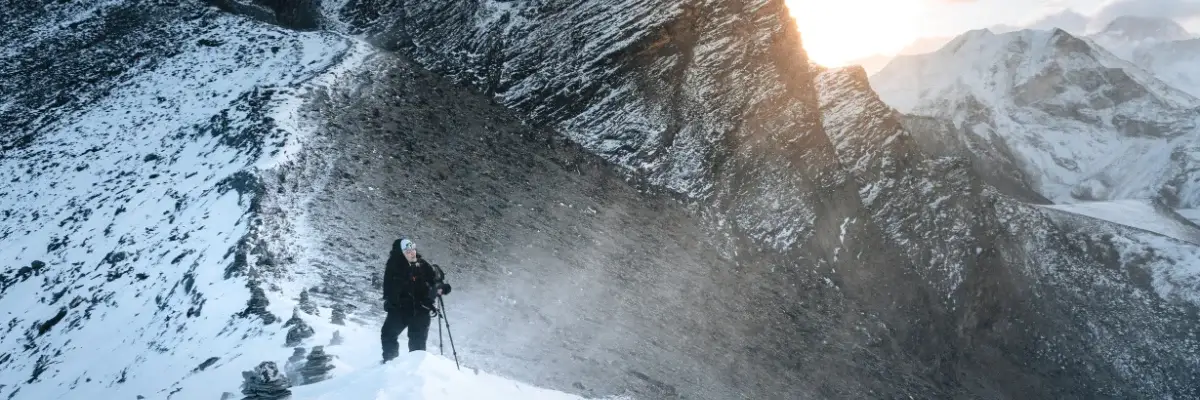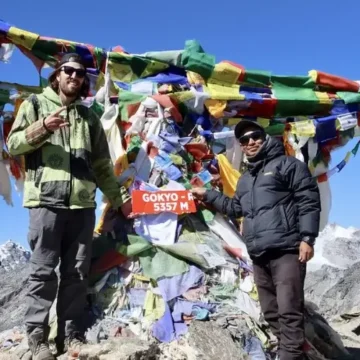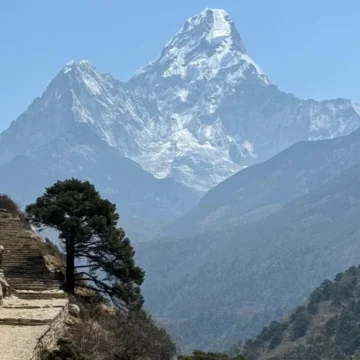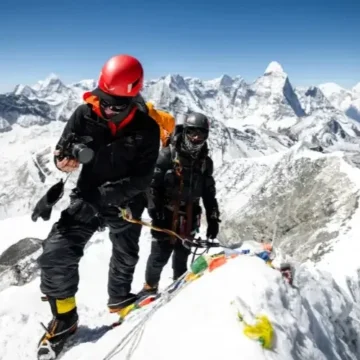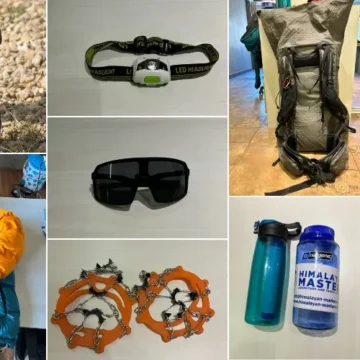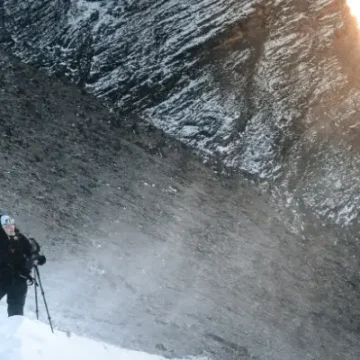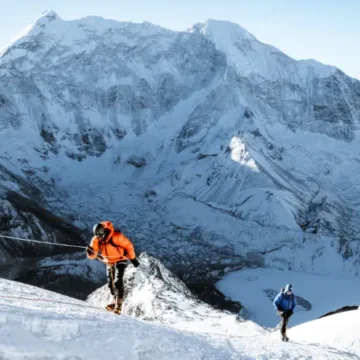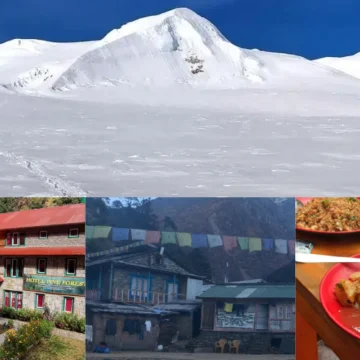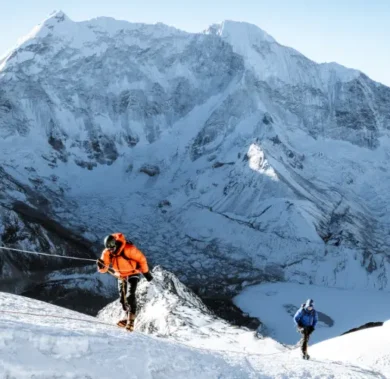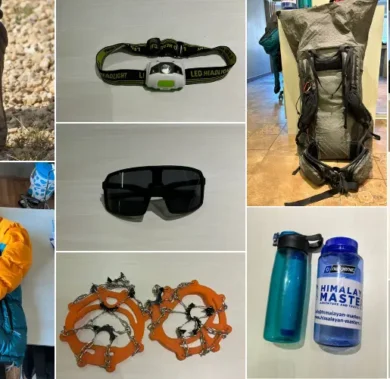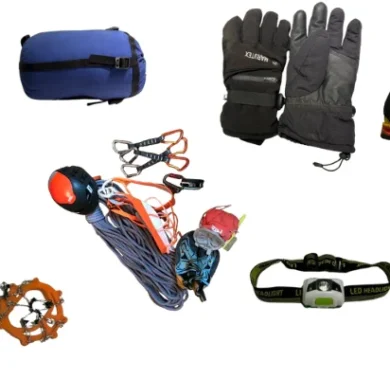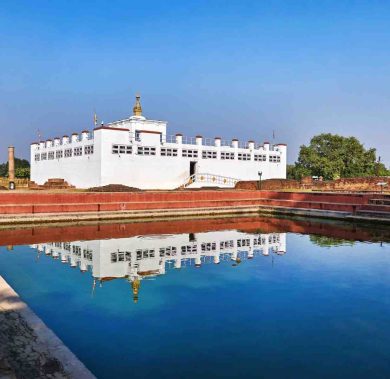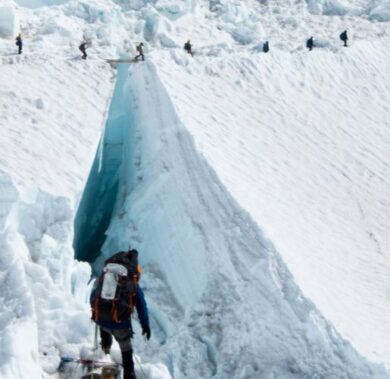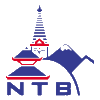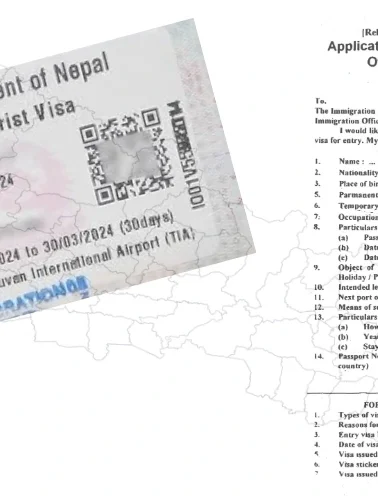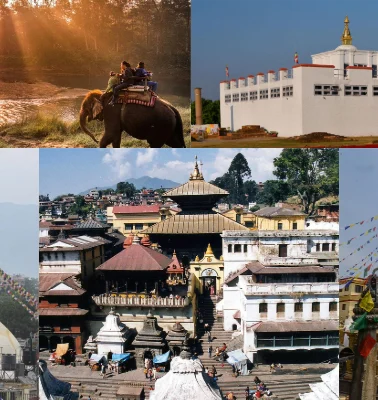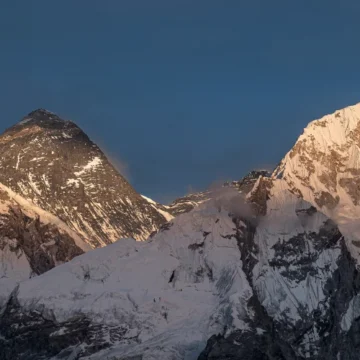
Mera Peak Climbing Difficulty and How to Prepare Like Pro
Table of Contents
Mera Peak climbing presents several difficulties, making it a challenging adventure for many trekkers. Its high altitude is the first challenge you will face. At 6476 meters (21,147 feet), it ranks as one of Nepal’s most famous trekking peaks. With each step, it becomes harder to breathe due to the thin oxygen level in the air, increasing the Mera Peak climbing difficulty. This can result in altitude sickness, which, if not handled, could be fatal and increase the difficulty of Mera Peak.
The other difficulty consideration for Mera Peak is geography, mainly the terrains involved in the movement of goods. Moreover, when it comes to technicalities, climbing Mera Peak is less technical than climbing the other peaks in Nepal.
Why is Mera Peak climbing considered difficult?
Although Mera Peak is a complete trekking peak, Mera Peak is a difficult peak. Its difficulty implies some form of climbing skills and the use of equipment such as crampons and ice axes. Climbers also deal with the weather conditions of these areas; storms or frigid climates can make the process even more challenging.
Connected with the challenge of a trekking adventure on rugged terrain in the classical Everest region that lasts several days, several other factors make Mera Peak one of the toughest challenges for climbers.
For quick and up-to-date information on the challenges that you will encounter during the Meara Peak climbing and how to tackle them, you can contact Himalayan Masters. Or, you can go through this article for detailed information.
Altitude Considerations: Acclimatization for Mera Peak
However, climbing Mera Peak requires acclimatization because the mountain has high elevations. Depending on the altitude, the human body requires hours or days to adapt to the low oxygen concentrations.
Most trekkers are likely to experience altitude in their trekking adventure at 2,500 meters (8,200 feet), and Mera Peak stands at even 6,476 meters. Acclimatization reduces the chances of severe altitude illnesses, such as Acute Mountain Sickness (AMS), High Altitude Pulmonary Edema (HAPE), and High Altitude Cerebral Edema (HACE). These conditions might become fatal if not treated as early as possible.
Because of altitude sickness, it is recommended to acclimatize cautiously, which is done following the “climb high, sleep low” rule during Mera Peak climbing. This implies that trekkers ascend gradually while on the trek, though they slightly descend during the night to sleep. Most trekking to Mera Peak takes several days and involves several stops and short hikes to increase the trekker’s altitude tolerance.
These spare days ensure that your body has created more red blood cells to transport oxygen more efficiently. You must also drink enough water, abstain from alcohol, and listen to your body during the trek. If you feel headaches, dizziness, or shortness of breath, report it to your guide and prepare to come down.
Besides altitude sickness, hypothermia, hypoxia, frostbite, etc., are other concerning risks. If not cared for or prepared carefully, it could be fatal. So, we recommend you wear warm clothes, according to the season you are travelling, and seek medical care if needed.
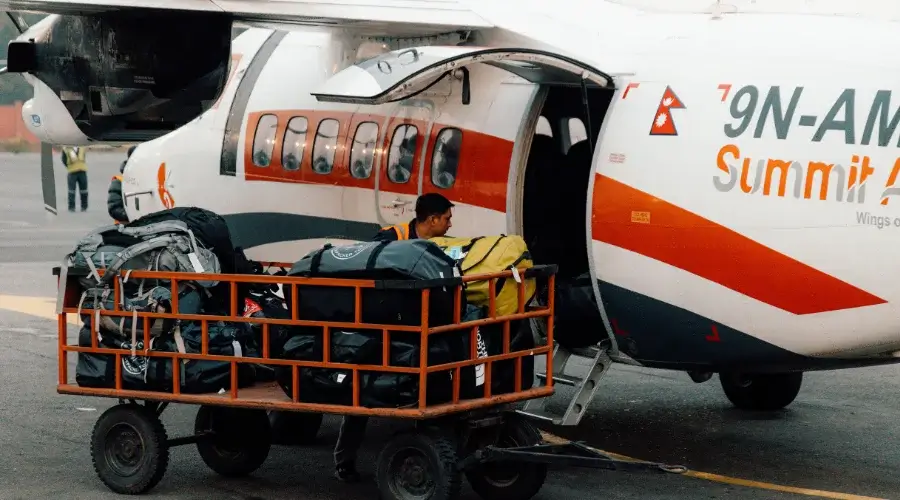
Requires Technical Skills
Mera Peak Summit is not all about fitness; you also require some technical skills. The first precaution any climber should take is that sometimes crampons and an ice axe will be necessary. A crampon is a claw fitted to the boot to enable one to walk on ice and snow without sinking into the snow or slipping.
You do not have to be an expert, but you should experiment with those tools before the trip.
Another skill is regulating one’s speed in an area at a high altitude. As the height increases, oxygen intensity reduces, so the individual expends more energy in their movements. This means you will need to learn how to walk at a snail’s pace and ensure that you stay energized and, where necessary, you can stop.
Though you don’t need to be a real mountaineering expert for Mera Peak, following these basics will make your climbing safer and more enjoyable.
Weather and Seasonal Factors Affecting
The weather conditions on Mera Peak are very volatile, which determines difficulty level.
In general, there are two main climbing seasons: The spring season, usually between March of a year to May, and the autumn season, which is between September and November.
There are fewer storms at such times, and the conditions are generally less cold. It also rains a little, but there is little snow. This makes the climb easier because the paths are visible and aren’t as slippery as the vertical ones.
Mera Peak has a difficult climbing season during the winter season, particularly from December up to February. During these months, there is relatively more snow, which hinders one from tracing the pathways well, and the chances of experiencing an avalanche are high. The mountain’s elevation also means that the days are shorter, thus providing you with fewer hours to climb.
June to August is the monsoon season. In the mountainous regions, snow is expected during the same period, but rain dominates the valleys. This can make a journey to the base camp very slippery and muddy, and landslides are common. At this time, the whole mountain might be concealed by clouds, making it difficult to know the right way.
Packing for the worst at any time of the year is advisable because the climate is likely to change at any time. Good weather can transform into a blizzard within minutes; thus, it is advised to be dressed appropriately and ready to change plans.
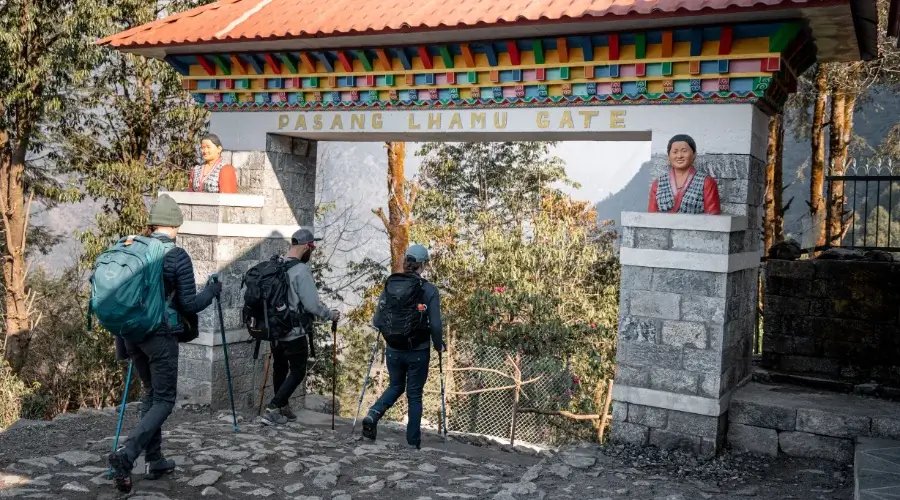
Preparation for Physical Fitness in Mera Peak
Mera Peak is a demanding, total climbing expedition that tests your physical endurance and patience.
Trekkers need to first take an exciting flight from Kathmandu to Lukla. Then, hike through Zatrwa La Pass (4610 m/15,125 ft) to Mera Peak Base Camp.
It takes about 5-7 days to reach the base of Mera Peak and the next 2 days to summit. For this challenging trek on a rugged Everest terrain, you need to be both physically and mentally prepared.
A person with admirable physical fitness can climb Mera Peak. However, they must have decent stamina to walk for 5-7 hours daily.
Also, trekkers need to pass some of the high-altitude, steep passes like Zatrwa La Pass and Mera La Pass, which could be challenging for many.
Then there is the peak itself. Trekkers need to carry their mountaineering gear and climb up and down the peak, which is the biggest challenge while climbing the peak.
How to Prepare for Mera Peak Climbing
Though not extremely challenging or technical, Mera Peak is still a difficult peak to climb. Do not take it lightly; you need to be in proper shape for a successful ascent.
We have prepared some ideas on how you can be prepared to conquer Mera Peak.
Acclimatization for Increasing Altitude
Mera Peak is a significant high-altitude peak, reaching a maximum elevation of 6,476 meters. So, trekkers ought to acclimatize properly to avoid the risk of altitude sickness. For this reason, the Mera Peak climbing itinerary, prepared by Himalayan Masters, includes acclimatization/rest day.
Further, doing some short, high-altitude hikes helps you get acclimatized to the elevation. Likewise, remember to drink at least 3 litres of water daily and consume high-calorie meals to maintain energy levels.
It’s also important to pay attention to signals that show you are affected by the altitude, such as a headache or dizziness. Understanding when enough is enough or when you’d have to take a break or go down if one’s feeling unwell can make the difference between a good climb and a fatal one.
Technical Skills and Training
Climbing Mera Peach is a technical activity requiring technical knowledge. It is a complete climbing adventure.
There are some sections while climbing Mera Peak. For instance, there are deep crevices, for which you will need to use a ladder to cross it. Similarly, there is a crampon point, the final push to the summit, where you need to use crampons.
For these, you need to have knowledge of how to use them. So, start training and get habitual with the mountaineering gears before starting the journey.
You can do some mountaineering training in your own country or here in Nepal. Some of the institutes in Nepal will help you with mountaineering training. Or, you can contact us for Mera Peak climbing information and some basic training.
If you have prior experience climbing, it is going well and better. However, if you want to get trained in Nepal, we suggest you arrive in Nepal at least 1-2 months before attempting Mera Peak.
Furthermore, it is also helpful to learn how to tie some superficial climbing knots and use a harness because you may have to be roped up with the other climbers on some parts of the mountain.
Preparation for Weather
Mera Peak and all other high-altitude peaks in the Himalayas have unpredictable weather conditions, especially at the higher altitudes. Likewise, the temperature could drop below -20°C. Mainly, the nights are freezing cold.
Also, the wind speed is high at higher elevations. So, you need to be prepared for these blizzard weather conditions.
Therefore, we suggest you do some cold weather training. You can do ice water, cold-water baths, or even some winter hikes.
Further, we suggest you do some breathing and endurance training, such as running or cycling in the cold.
Proper layering of clothes is also equally important. You need a thermal and quick moisture-wicking base layer, with an insulating fleece or down jacket as mid-layer. Finally, the outer layer is layered with windproof and waterproof jackets. Likewise, wear thick socks to keep your feet warm and warm gloves, beanie, and neck gaiters for your hand, head, and neck, respectively.
Physical Fitness Training
Preparing for a climb of Mera Peak requires more than just an ordinary fitness level. One of the best ways we can achieve this is by taking long walks, steadily climbing up the distance, plus the quantities of the things you bring in your backpack. This should be done over the week, such as hiking for 6-8 hours at a stretch.
Alongside hiking, cardio exercises are essential to improve your heart and lung strength. Running, cycling, or swimming for 30-45 minutes, 3-4 times a week, helps. You should also include strength training, especially for your legs and core. Squats, lunges, crunches, and planks are great exercises for this.
Don’t forget about flexibility – yoga or stretching can help prevent injuries and make you more comfortable during long days of climbing. Start training at least 3-4 months before your trip, gradually increasing the intensity.
Additionally, you must do some specific exercises for your shoulders. We suggest you practice hiking with some weight, about 10-15 kg. Doing some weight exercises like barbell shoulder presses, dumbbell lateral raises, Arnold presses, etc., is helpful.
Be Mentally Prepared
Not to forget, your mental resilience plays a vital role in preparing for the cold. If not directly, being mentally prepared and positive can determine the success of Mera Peak climbing.
Stay positive and simulate harsh conditions on the mountain, which lets you prepare for what comes ahead.
Further, if you panic during an emergency, it might delay rescue or even cause the condition to be severe. So, try to stay calm and listen to your guide’s suggestions.
Having prior knowledge of the terrain, difficulty, weather, etc., helps you be mentally prepared and lets you enjoy the trip.
Route Options and Their Varying Difficulty Levels
The route that Mera Peak offers varies in degree of difficulty as well. The standard approach originating from Khare is the most frequent and straightforward. This Route begins by passing through forests and villages, slowly ascending altitude. Khare trek follows the following path: Mera La pass – high camp. Approaching the summit takes one up steep snow slopes, but it is pretty easy if the weather is fine, and this concludes the journey. This Mera Peak route is suitable for those trekkers who have prior experience in trekking but have never been into high-altitude climbing.
A more demanding path starts from the area of the Hongu Valley. This approach is more extended and conspicuous; one must cross through mountain heights and often glaciers. It is more complex; technically, one needs to be a better mountaineer.
There is also the more straightforward but longer eastern approach from the Hinku Valley to the Deurali Pass. It involves crossing over the Amphu Lapcha Pass, one of the highest mountain passes in Nepal, which is pretty challenging. The terrain is steep, and some level of technical climbing is involved.
The trekkers intending to go through this route should consider themselves mountaineers. Whether you take the quick route of flying to high altitude or climb gradually, spending some days at a higher altitude is always advisable before climbing. It is easier, of course, and it can become much more complicated if the weather is not good or if there is much fresh snow, but being free and easy is the best thing to do.
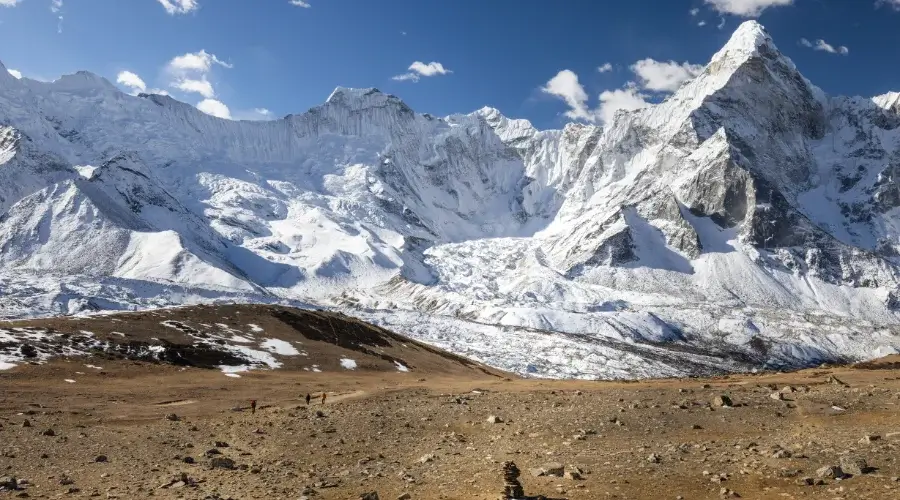
Mera Peak Difficulty vs Island Peak Difficulty
These two, Mera Peak and Island Peak, are popular climbing destinations in Nepal but offer different experiences and levels of difficulty. Mera Peak, at 6,476 meters (21,247 feet), is higher than Island Peak, at 6,189 meters (20,305 feet).
However, many climbers find Island Peak to be more technically challenging. Mera Peak’s standard route is generally a straightforward snow climb, with some crevasses to navigate but no real technical climbing required. The main challenges on Mera Peak are the altitude and the length of the summit day, which can be up to 12 hours round trip.
Island Peak Difficulty, on the other hand, involves more technical climbing. While the approach trek is similar to Mera Peak, the summit push on Island Peak includes a steep ice wall that requires fixed ropes and jumar ascenders. This section can be intimidating for those new to technical climbing. Island Peak also has a narrow, exposed ridge near the summit, which can be nerve-wracking for some climbers. However, Island Peak’s summit day is typically shorter than Mera Peak’s.
Regarding altitude, Mera Peak is more challenging due to its greater height. However, both peaks require good physical fitness and basic mountaineering skills, but Island Peak demands more technical expertise. Your choice between the two might depend on whether you prefer a higher altitude challenge (Mera) or a more technical climbing experience (Island).
Common Challenges Faced by Climbers
The most challenging aspect climbers experience when trying to reach the top of Mera Peak is altitude. There are signs of headache, nausea, difficulty breathing, or disturbance in sleep pattern. This can make the climb much more complex and sometimes even cause the climbers to quit. Even in the best times, it’s generally cold at the top and can be much colder when factoring in wind chill. Maintaining your body temperature, particularly when moving early in the morning, takes a lot of work.
Another significant area for improvement is the length of the summit day. It is common for climbers to begin their activities at night, at 2 or 3 a.m. This makes for a very long and tiring day at a high altitude. Because of the high altitude, all kinds of tiring work are scheduled for the day. The same can be said for the snow conditions, which make the journey challenging.
Why Choose Himalayan Masters for Mera Peak Climbing Trip?
Himalayan Masters is a well-reputed trekking company in Nepal, with a 5/5 rating on TripAdvisor. We have over 95% success rate with over 700+ happy clients until 2024. Do not forget to check out our clients’ reviews on TripAdvisor.
We offer the most affordable and well-managed trip packages with optimum services. Himalayan Masters is a team of experienced and dedicated individuals who prioritize trekkers’ safety and a comfortable trekking journey.
Remember Himalayan Master for any information or help. You can reach out to us by email at [email protected], WhatsApp (+977-9823636377), and by phone call.
Want to know more?
Speak to an Expert





Sandip Dhungana
Nepal 🇳🇵
Whatsapp: +977-9823636377

